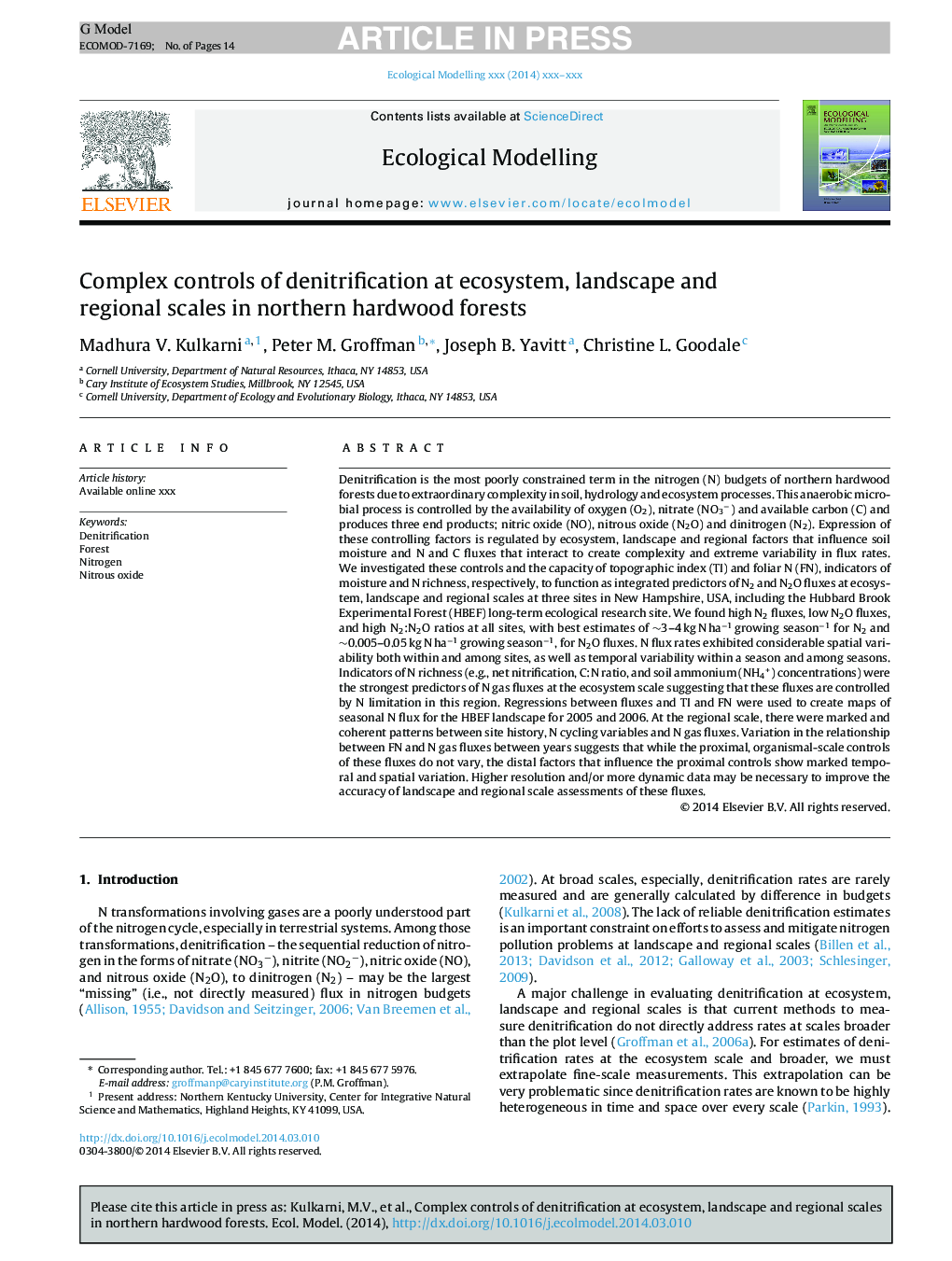| Article ID | Journal | Published Year | Pages | File Type |
|---|---|---|---|---|
| 6296683 | Ecological Modelling | 2015 | 14 Pages |
Abstract
Denitrification is the most poorly constrained term in the nitrogen (N) budgets of northern hardwood forests due to extraordinary complexity in soil, hydrology and ecosystem processes. This anaerobic microbial process is controlled by the availability of oxygen (O2), nitrate (NO3â) and available carbon (C) and produces three end products; nitric oxide (NO), nitrous oxide (N2O) and dinitrogen (N2). Expression of these controlling factors is regulated by ecosystem, landscape and regional factors that influence soil moisture and N and C fluxes that interact to create complexity and extreme variability in flux rates. We investigated these controls and the capacity of topographic index (TI) and foliar N (FN), indicators of moisture and N richness, respectively, to function as integrated predictors of N2 and N2O fluxes at ecosystem, landscape and regional scales at three sites in New Hampshire, USA, including the Hubbard Brook Experimental Forest (HBEF) long-term ecological research site. We found high N2 fluxes, low N2O fluxes, and high N2:N2O ratios at all sites, with best estimates of â¼3-4 kg N haâ1 growing seasonâ1 for N2 and â¼0.005-0.05 kg N haâ1 growing seasonâ1, for N2O fluxes. N flux rates exhibited considerable spatial variability both within and among sites, as well as temporal variability within a season and among seasons. Indicators of N richness (e.g., net nitrification, C:N ratio, and soil ammonium (NH4+) concentrations) were the strongest predictors of N gas fluxes at the ecosystem scale suggesting that these fluxes are controlled by N limitation in this region. Regressions between fluxes and TI and FN were used to create maps of seasonal N flux for the HBEF landscape for 2005 and 2006. At the regional scale, there were marked and coherent patterns between site history, N cycling variables and N gas fluxes. Variation in the relationship between FN and N gas fluxes between years suggests that while the proximal, organismal-scale controls of these fluxes do not vary, the distal factors that influence the proximal controls show marked temporal and spatial variation. Higher resolution and/or more dynamic data may be necessary to improve the accuracy of landscape and regional scale assessments of these fluxes.
Related Topics
Life Sciences
Agricultural and Biological Sciences
Ecology, Evolution, Behavior and Systematics
Authors
Madhura V. Kulkarni, Peter M. Groffman, Joseph B. Yavitt, Christine L. Goodale,
